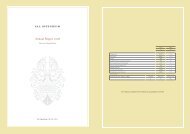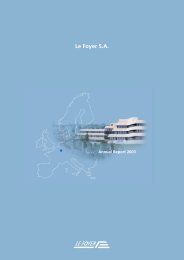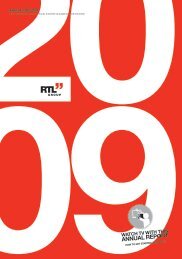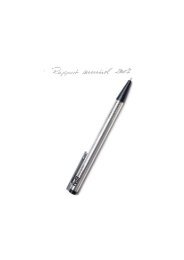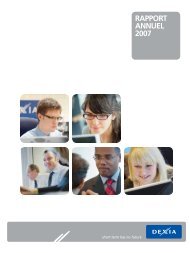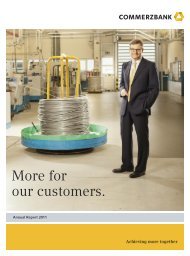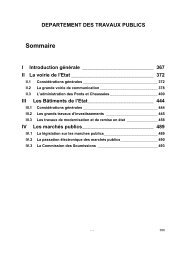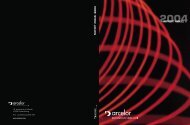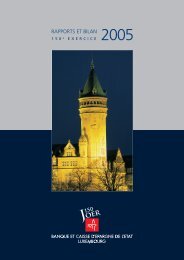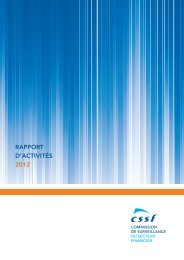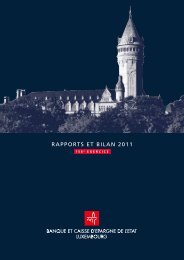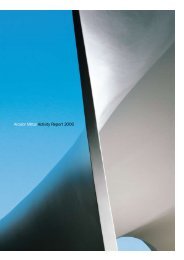ANNUAL REPORT ARCELOR 2003 - paperJam
ANNUAL REPORT ARCELOR 2003 - paperJam
ANNUAL REPORT ARCELOR 2003 - paperJam
You also want an ePaper? Increase the reach of your titles
YUMPU automatically turns print PDFs into web optimized ePapers that Google loves.
8) Impairment of assetsThe carrying amounts of the Group’s assets, other thaninventories, deferred tax assets and assets arising fromemployee benefits, are reviewed at each balance sheetdate to determine whether there is any indication ofimpairment. If any such indication exists, the asset’srecoverable amount is estimated. For intangible assetsthat are not yet available for use, their recoverableamount is estimated at each balance sheet date.An impairment loss is recognised whenever the carryingamount of an asset or the cash-generating unit to which itbelongs exceeds its recoverable amount. Impairment lossesare recognised as an expense in the income statement.Calculation of recoverable amountThe recoverable amount of an asset is the higher of itsnet selling price and its value in use. In assessing itsvalue in use, the estimated future cash flows arediscounted to their present value using a pre-taxdiscount rate that reflects current market assessmentsof the time value of money and the risks specific to theasset. For an asset that does not generate cash inflowslargely independent of those from other assets, therecoverable amount is determined for the cash-generatingunit to which the asset belongs.The recoverable amount of investments in held-to-maturitysecurities and receivables is calculated as the presentvalue of the expected future cash flows, discounted at theoriginal effective interest rate inherent in the asset.Cash flows on short-term receivables are not discounted.Reversal of an impairment lossAn impairment loss recognised in prior years is reversedif, and only if, there has been a change in the estimatesused to determine the asset’s recoverable amount sincethe last impairment loss was recognised. However, theincreased carrying amount of an asset due to a reversalof an impairment loss should not exceed the carryingamount that would have been determined (net ofamortisation or depreciation) had no impairment lossbeen recognised for the asset in prior years.An impairment loss recognised for goodwill is notreversed unless the impairment loss was caused by aspecific external event of an exceptional nature that isnot expected to recur, and subsequent external eventshave reversed the effect of that event.9) Investments in debt and equity securitiesInvestments held for trading are classified as currentassets and are stated at fair value, with any resulting gainor loss being recognised in the income statement.Investments with a fixed maturity date above one yearand where the Group has the positive intent and the abilityto hold the investment through to maturity, are included innon-current assets and are stated at amortised cost. Thelatter is determined using the original effective interest rateinherent in the investment less impairment losses.Other investments held by the Group are classified asbeing available-for-sale and are stated at fair value, withany resulting gain or loss being recognised in the incomestatement.The fair value of investments held for trading andinvestments available-for-sale are taken as the quotedbid price at the balance sheet date. For unquotedsecurities, discounted cash flow techniques are used.10) Trade and other receivablesTrade and other receivables are stated at cost lessprovisions for irrecoverable amounts.11) InventoriesConstruction work in progressConstruction work in progress is stated at contract costincreased by the related profit recognised to date lessprogress billings. Cost includes all expenditure directlyrelated to the project and an allocation of fixed andvariable overheads incurred in the Group’s contractactivities.Other inventoriesRaw materials and supplies are stated at the lower ofcost (using either the average cost method or the first infirst out method) or net realisable value. Finished goodsand work-in-progress are stated at the lower of productioncost or net realisable value.Production cost includes direct raw material and labourcosts and a portion of overhead costs, excludinggeneral and administrative expenses. The market valueof raw materials and other inventories is based on thenet realisable value, including a provision for obsolescenceor slow-moving items where appropriate.12) Cash and cash equivalentsCash and cash equivalents include cash and short-terminvestments with a maturity of less than three monthsfrom the acquisition date.Short-term investments are valued at market value atthe end of each period.financial information > consolidated financial statements<strong>ANNUAL</strong> <strong>REPORT</strong> <strong>ARCELOR</strong> <strong>2003</strong> 141



